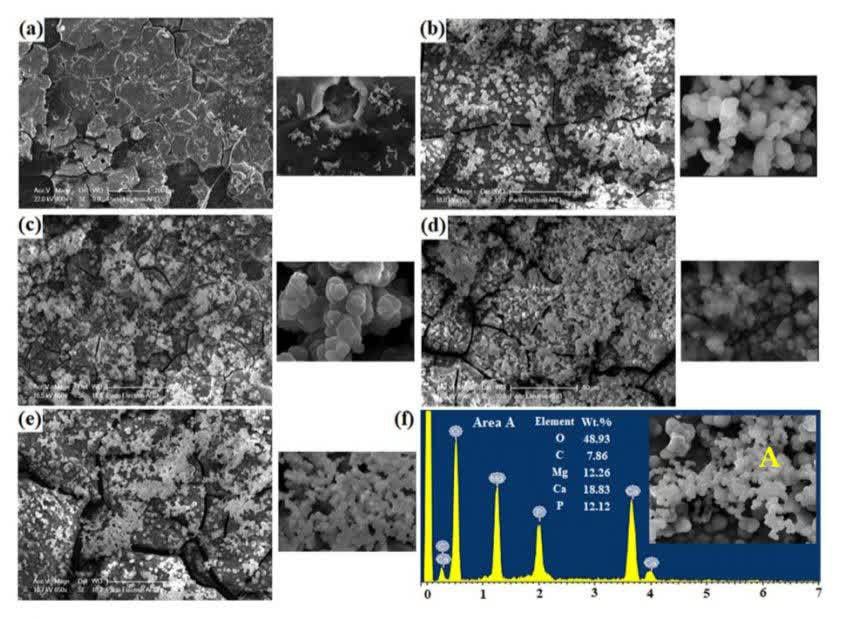


Magnesium (Mg)
Magnesium (Mg) is a silvery-white alkaline earth metal. Magnesium is also the 8th most abundant metal on our planet, constituting about 2.4% of the Earth’s crust. It is also considered to be the lightest structural metal, with a density of 1.74 g/cm3. Magnesium has a hexagonal close-packed (hcp) crystalline arrangement. Similar to the majority of metals with this structure, magnesium exhibits reduced ductility when subjected to lower temperatures during processing.
Pure magnesium is not found in nature, so all magnesium is produced by extractive chemical processes. The main sources of magnesium are seawater and natural brines (approximately 1.3 kg/m3 of dissolved magnesium), and minerals such as magnesite (MgCO3) and dolomite (MgCO3.CaCo3).
The extraction of magnesium from raw source materials is an energy-intensive process. It begins with concentrating the source material into a form that can be used in one of the two primary methods: the thermal reduction (Pidgeon process) method and the electrolytic process.
"Magnesium Ingots"
Pidgeon process
dolomite ore is crushed and heated (calcined) in a kiln, resulting in a mixture of magnesium and calcium oxides. These oxides are combined with crushed ferrosilicon. The mixture is made into briquettes which are heated in a vacuum until the silicon in the ferrosilicon reduces the magnesium oxide to magnesium. This process is conducted at a temperature above the vaporization temperature of magnesium. The pure element is collected as a gas and then condensed, cooled, and cast into ingots.
electrolytic process
involves two stages: (1) obtaining pure magnesium chloride from seawater or brine, and (2) electrolysis of fused magnesium chloride.
For stage 1, the production of pure magnesium chloride, seawater, or brine is treated with calcined dolomite to generate magnesium hydroxide. The Mg(OH)2 is then transformed into oxide. Conversion to magnesium chloride is achieved by heating the oxide with carbon in the presence of chlorine at high temperatures in an electric furnace.
Stage 2is the electrolysis of the fused anhydrous magnesium chloride the output of the previous step. The MgCl2 is continuously fed into electrolytic cells, where it is melted to conduct electricity. Electrolysis leads to the production of magnesium and chlorine gas.
Characteristics of Magnesium
Magnesium possesses several distinctive characteristics that influence its properties and applications. These are listed below.
Benefits of Magnesium
Magnesium offers a range of benefits across various aspects of industrial applications:
With a density of 1.74 g/cm³, magnesium is the lightest structural metal. Magnesium offers a weight advantage of about 30% over aluminum and an impressive 50% over titanium.
Magnesium is the 8th most plentiful element found on Earth. It is an economical choice when balancing all factors, such as weight in weight-critical applications.
Has excellent strength-to-weight and stiffness-to-weight ratios. Magnesium is inherently strong due to its hexagonal, closely packed crystal structure.
- Exhibits good thermal conductivity.
- Can be engineered to offer good corrosion resistance.
- Offers high specific strength, which is the strength of a material relative to its weight.
- Recycling of magnesium requires significantly less energy than primary extraction.
- Has the highest known damping capacity among structural metals, outperforming aluminum, titanium, and steel by a factor of ten.
- Can be easily alloyed with other metals and elements.
- Certain magnesium alloys are biocompatible and can be used for implants and medical devices.
- Some magnesium compounds can offer flame-retardant properties, making them useful in applications where fire safety is a concern.
- When used in contact with other metals, especially in the presence of an electrolyte (like moisture), magnesium can act as a sacrificial anode to protect the other metal from galvanic corrosion.








